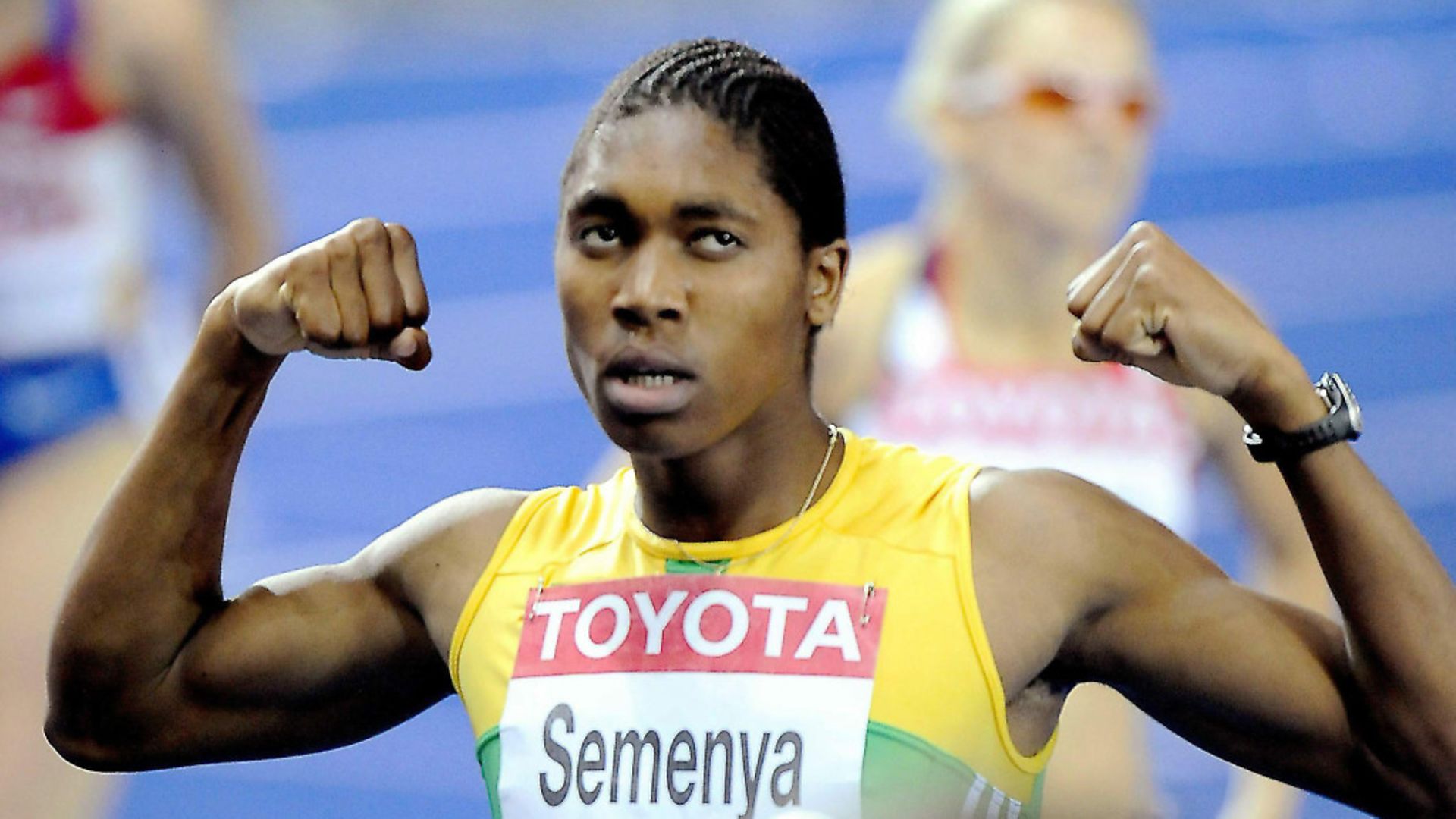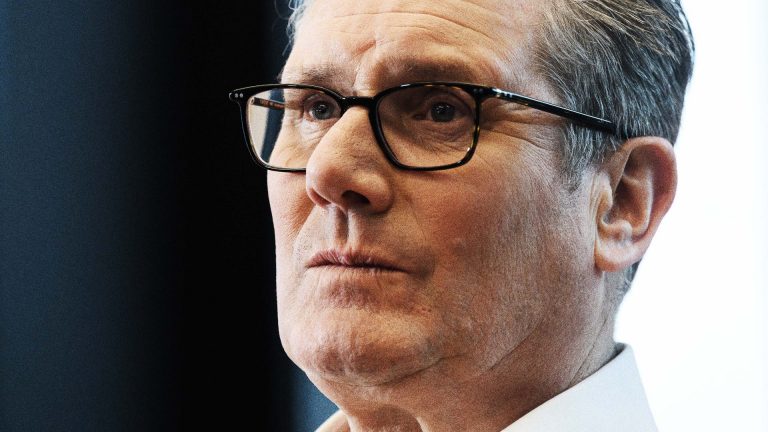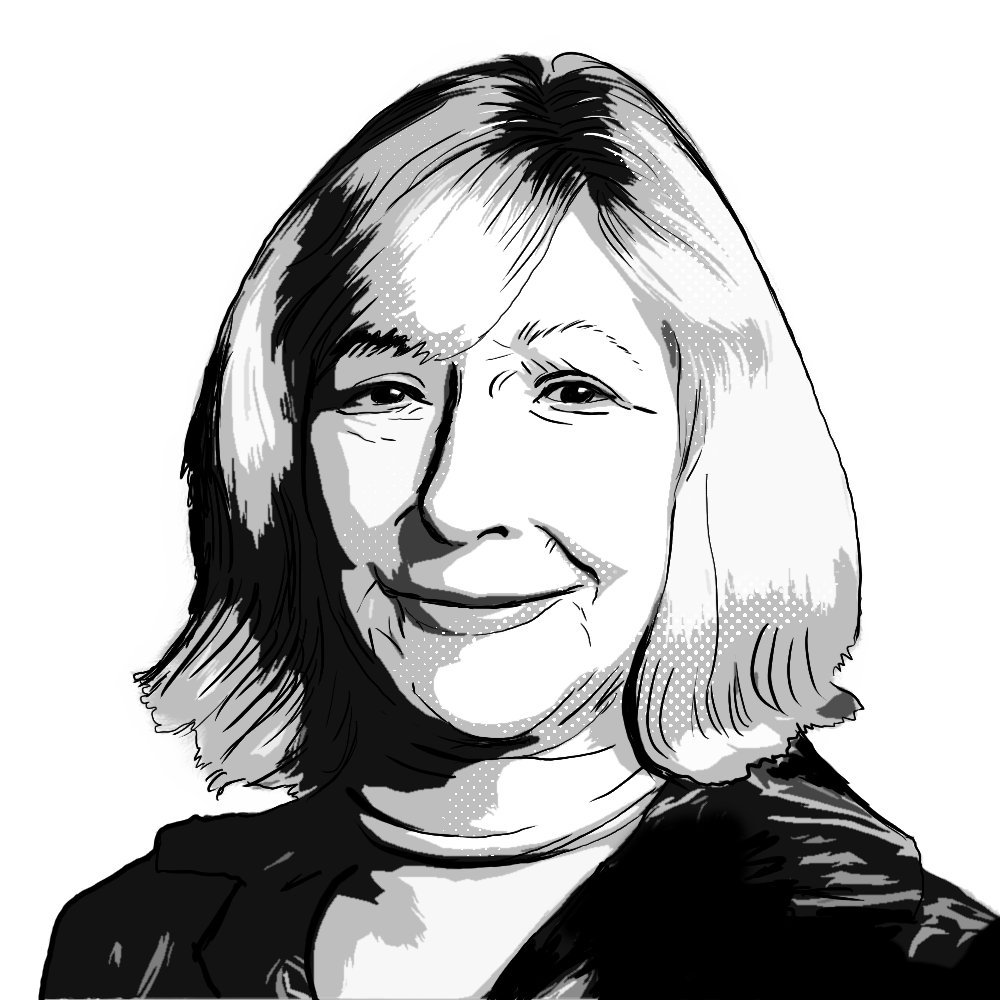
Anna Kessel on Caster Semenya, prejudice and a controversy dividing athletics.
Are you woman enough? This is the question that has been repeatedly asked of Caster Semenya ever since, in 2009, at the age of 18, she blew away the competition to win gold at the World Championships in Berlin. Semenya was born and raised a woman but the International Association of Athletics Federations (IAAF) dictate their own set of criteria for who is female enough for their women’s competitions. So Semenya faced a choice: undergo medically unnecessary hormone treatment, or give up the career she loves. It is an ultimatum that no other woman, in any walk of life, would face.
I was there that night in Berlin nine years ago, working as a young athletics correspondent, when the first whispers snaked their way around the press tribune. I remember the crackle in the air, the jostling of journalists. I remember the muted crowd as Semenya won her medal, and the haunted look on the teenager’s face, knowing that the greatest moment in her life was about to be torn apart. ‘She is not a woman,’ opined Elisa Cusma Piccione, an Italian runner, as she came off the track. The free-for-all discussion about Semenya’s sex and genitalia, that would dominate athletics for the next decade, had begun.
Hyperandrogenism is an umbrella term which includes intersex traits, such as an enlarged clitoris or fused labia, as well as polycystic ovary syndrome, which affects one in 10 women in the UK. It is characterised by elevated testosterone levels which, the IAAF argues, creates an unequal playing field in women’s sport. To date they have not been able to provide scientific evidence to meet the Court of Arbitration for Sport’s burden of proof on this point.
At a time when mandatory sex testing in athletics has long since disappeared, hyperandrogenism has become the gateway for an ugly new chapter on sex and gender in sport. In 2012, ahead of the London Olympics, four female athletes underwent a partial clitoridectomy, a gonadectomy, followed by feminising vaginoplasty and hormone treatment under the IAAF policy. The athletes were between 18 and 21 years old. There was no medical reason to perform these procedures, the potential side effects of which include sterilisation and severe osteoporosis. While surgery is optional, if an athlete refuses to undergo hormone treatment they are banned from the sport.
Indian sprinter Dutee Chand fought the policy and won a landmark case at the Court of Arbitration for Sport in 2015, temporarily suspending the ruling. But last month the IAAF announced new eligibility regulations for female classification. This time they did not include Chand’s event, only races from 400m up to a mile (Semenya’s range), thereby rendering the decision at CAS irrelevant.
The response from around the world has been damning. Steve Cornelius, a professor of law on the IAAF disciplinary tribunal, resigned in an open letter to the association’s president Lord Sebastian Coe describing the regulation as ‘unlawful’ in its discrimination of women and, ‘based on the same kind of ideology that has led to some of the worst injustices and atrocities in the history of our planet’.
The South African government said it was ‘blatant racism’ and announced its intention to pursue the case at the Court of Arbitration for Sport, which is based in Lausanne, Switzerland. Meanwhile, sports scientist Ross Tucker – who has argued against Semenya and hyperandrogenism in women’s sport – described the policy as ‘weak’ and unlikely to be able to withstand a legal challenge.
A statement from the Women’s Sports Foundation said: ‘It enforces a double standard, since widely-varying levels of testosterone among male athletes do not raise fairness concerns, but are treated as part of the normal variations among the field of competitors.’
The scandal of how science has been misapplied to uphold an ideology has drawn in experts from outside of sport. Simon Franklin is a postdoctoral research economist at the London School of Economics. When he heard about the IAAF’s research – and in particular the methodology that had been applied – he began working with bioethicist Dr Silvia Camporesi and ran a statistical analysis. The findings left him appalled. ‘This study is completely crazy,’ he says.
Franklin lists multiple problematic aspects. ‘For a start the standard set by the Court of Arbitration for Sport [in the 2015 ruling] was to prove a 10% advantage [to hyperandrogenic women competing in athletics]. The paper claims to have found a 1.8 to 4.5% advantage, which falls short. But even that claim is itself wrong and biased. Secondly, this is not publicly accessible data so no one can check the work they’ve done, it makes it very difficult to believe some of the results.’
Franklin argues that in splitting up the data by event – rather than establishing whether there is an overall advantage across the sport of athletics – is fundamentally problematic. ‘You could look at the same data and instead of people with intersex conditions, you could take athletes with blonde or brown hair, and just as likely come up with a difference. We can’t accept it as reaching the critical standard of scientific enquiry. You simply can’t conclude anything from the data.’
He also points to how one athlete, or group of athletes, performing well in a particular event skews the results. So Semenya’s excellence in the middle-distance events translates into a regulation around those distances, meanwhile Chand’s performances in the 100m do not threaten the status quo which, in the IAAF logic, translates into no legislation around her event. ‘If you redid this study every five years you could get different events every time. You might end up moving the goalposts depending on who is in the limelight.’
Such a system forces Semenya back into the spotlight once more. Now 27, the South African posts messages of defiance on social media. But in internet chatrooms sports fans speculate freely over her performances.
Katrina Karkazis, medical anthropologist and bioethicist at Stanford, has spent more than 20 years specialising in variable sex traits and has written extensively about testosterone. ‘Many don’t even know that we have testosterone in a woman’s body and that we need it to be healthy. So it’s easy to create an idea that testosterone in a woman is a problem. The implication is that testosterone is a jetpack, you can sit around and not do very much. Meanwhile the poor low ‘T’ women are struggling to keep up with the super-women.’
She despairs at the widely uninformed views. ‘Caster Semenya grew up impoverished in a tiny village. When people talk about her extraordinary progress around the time of Berlin 2009, they fail to acknowledge that she moved to a training centre where, for the first time, she was getting three meals a day… When [IAAF Dr] Stephane Bermon makes a claim that they lowered the testosterone of three women and they slowed down, you can’t disentangle that from the effect of having dramatically shifted their endocrine system, it could be from side effects not because testosterone is now powering them less.’
Karkazis questions the very foundation on which fairness in sport is built. ‘What if all the [sport’s] policy makers had been from the global south, and they created a policy around unfair advantage? I don’t think it would be physiological. I think it would be training facilities, access to coaches, population size, money. So this regulation is a construction of fairness that benefits women from the global north and harms women from the global south.’
Payoshni Mitra is a research consultant and athletes’ rights activist who had previously worked on cases with hyperandrogenic athletes in India. When Chand’s story broke, Mitra went to visit her village in Odisha, in the east of the country, to offer support. ‘I had a stomach upset that day,’ Mitra says. ‘I tell this story because it points to the gap between the people making these policies sitting in Monaco or Lausanne – some of the richest places in the world – and the people affected by these policies. When I went to Dutee’s village I needed to look for a toilet. There was not a single one. When they need to empty themselves they just go to the riverside. But I was not used to it since I grew up in an urban middle class family in India. Finally, that was what I had to do because there was no other option.’ Previously when an athlete was diagnosed as hyperandrogenic they were given two options: undergo hormonal therapy or surgery, or quit athletics for good. But when Mitra was appointed to represent Chand, by Jiji Thomson, then director general of the Sports Authority of India, they found a third option: fight. Chand, who had recently begun studying law at university, took on one of the biggest sports organisations in the world. And won. Over Skype, with Mitra translating, Chand explains how she feels about the new regulations. ‘At first I was very happy, because it meant I could now compete freely. But my second reaction was frustration. That this thing had not gone away, that other women were still being prevented from competing.’ Chand met Semenya for the first time at the Rio Olympics. ‘She is very nice, I liked her.’ The pair have kept in touch. ‘When the new regulation came, I emailed her and offered her my legal team if she wanted to challenge it. The last four years have been very difficult for me. The worst part was having my gender questioned. In the street, and in the court. It was very bad. I want to put all that behind me now and get on with my life.’ Chand has become a hero in her home state of Odisha.
She has a job at the state government, a good income, cars, and celebrity status. Life is not straightforward – the national federation set a ridiculous qualifying time for the 100m which meant that Chand could not compete at the Commonwealth Games this year, despite being the national record holder – but overall she has found a sense of peace.
For Mitra, battle continues. ‘A regulation that forces athletes to quit the sport or take hormone replacement therapy for years – without scientific evidence? I just can’t believe that an institution could do something like this. I have never felt comfortable to say so, but I think it is a racist policy.’ The new regulation comes into effect on November 1 and a legal challenge is expected. ‘If anyone else wanted to challenge the current ruling I would like to help as much as I can,’ says Mitra. Much of the recent debate has been cast as the need to protect women’s sport. Karkazis laughs. ‘If they’re going to protect or help female athletes they should be arguing for equal pay, not scrutiny of female bodies.’
Increasingly female athletes, past and present, have been used as ammunition in the debate. Australian former 800m runner Madeleine Pape, who competed against Semenya at the 2009 World Championships, says governing bodies are guilty of leaving athletes uninformed. As an athlete she followed the status quo. ‘My stance at the time was: she’s very fast, she’s a tomboy, she doesn’t try to present herself in a feminine way, if this is what they’re saying about her I’ll go along with it.’ After an injury ended Pape’s career in 2010 she took feminist studies at the University of Wisconsin-Madison and read the case of Spanish former hurdler Maria José Martínez-Patiño, who fought gender testing in the 1980s and won.
Pape found her assumptions challenged. She recently conducted her own research to find out whether athletes were being educated on hyperandrogenism. ‘Ahead of the Rio Olympics they were getting information on the Zika virus, on safe sex, on food and water. But nothing on women with high testosterone.
‘The issue is hypervisible, but governing bodies are very silent on it.’ I ask Karkazis how she thinks sport should handle the issue of hyperandrogenism. She smiles. ‘Here’s the solution: now what’s the problem? I recently gave a talk and a guy raised his hand at the end and said, ‘so if we believed these women were women then we wouldn’t be here?’ That’s basically it.’
Anna Kessel is a sports writer for the Guardian and the Observer










